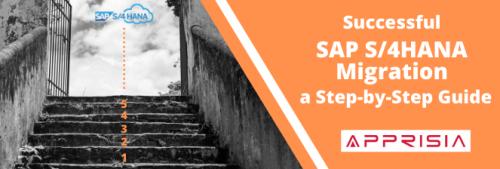Simple Steps for SAP S/4HANA Migration

SAP S/4HANA migration is a great way to upgrade your SAP ECC system without losing any critical data. Successful SAP S/4HANA Migration offers you a better scope to manage your business.
To ensure the whole conversion goes appropriately and offers the desired result, you need to chalk out a plan and follow it step by step.
Here is a detailed guide about SAP S/4HANA Migration
The whole migration procedure is completed in two phases:
Phase 1: Preparation Phase
This phase is crucial. You need to prepare your existing SAP ECC System for migration by following these steps:
- Planning for migration
Proper planning is necessary. The planning allows you to find details about the scope of migration, the budget requirements, schedule of migration, and how to project this migration for your organization. Besides that, you also have to check the technical aspects of the migration to ensure the procedure is successful. You can consult SAP S/4HANA consulting services for the proper guidance in this stage.
- Check the system requirements
Before you start the migration, you need to find details about the system requirements for this migration. If your system does not match the criteria, it may not offer the desired results. Hence, always perform a detailed inspection of the present system and check the following parameters-
- Does it require Dual-Stack Split?
- Does the database need an update?
- Is the system Unicode- enabled?
- Maintenance Planner
For migrating to SAP S/4HANA from SAP ECC, you need to check your system through the MP or maintenance Planner Tool. This tool from SAP performs an inspection of your system to check if the installed add-ons, functions, etc., will be compatible with SAP S/4HANA. Besides that, it also has a vital role in offering essential files during the upgrade. Hence, you should always perform a check with this tool. After the tool finds out the right migration path, you can move forward for migration. SAP S/4HANA services can offer guidance on this matter.
- Perform Simplified Item Check
The Simplification Item Check allows you to ensure that the existing business procedures will run even after the migration. Hence, the organization planning for SAP migration must perform a Simplified Item check as soon as possible to find the errors that may hinder the migration and the right path for migration.
- Migration of Custom code
The last step in this phase is the migration of custom code. In this step, multiple development factors like possible enhancements, modifications, etc., are analyzed to find which code is compatible or not compatible with the new structure. You need to perform this analysis and find the necessary adjustments and alterations that may help you prevent any hurdles after the migration.
Phase 2: Technical Phase
After you have completed all these steps, your system is ready for the much-awaited upgrade or Brownfield Conversion. This technical phase involves:
- Software Update Management
The Software Update Management or SUM helps to migrate the data which may be required after migration. It is essential for the systems which do not come with a HANA database. At first, you have to implement SUM in your database, and then include the new tools, applications, etc. After this, you can proceed with the migration. The migration will convert the data structure and remodel them according to the new system.
After this, your system may be required to go through some finishing steps even after the migration to ensure the whole system is ready for use.
Post Your Ad Here
Comments